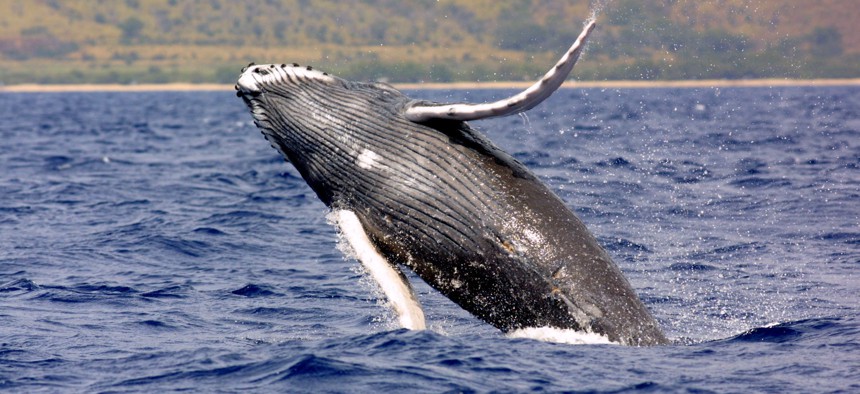
NOAA
Using a Drone, NOAA Scientists Filmed a Humpback Doing a Headstand
Drones are allowing scientists to study animals in their natural environments without disturbing them.
Using the one of the newest tools in their arsenal, a quadcopter drone, scientists with the Hawaiian Islands Humpback Whale National Marine Sanctuary filmed rare behavior of humpback whales off the coast of Maui.
Hovering about 40 feet over a female humpback and her calf, the drone, A Phantom 2, filmed the mother whale engaging in so-called tail-sailing behavior, in which she essentially does a headstand, flapping her tail in the air, as you can see in the video above. Scientists say that the behavior is common among other whale species, but has rarely been seen in humpbacks, the most common whale in Hawaiian waters.
Drones have become a powerful new tool for scientists who study marine mammals, as they are less intrusive than boats and offer a unique perspective on animal behavior. The small quadcopters can not only film with high-definition cameras, but can also be equipped to gather biological data from whales’ misty exhalations when they break the surface to breathe. For example, organisms in the whale’s breath might offer insight into the animal’s health.
Scientists also say that small drones have become immensely useful during rescue missions, when whales have been entangled by fishing gear or other human-made objects. The bird’s eye perspective can inform rescuers of the extent of the entanglement and help them figure out how best to help the whales. Approximately one third of the whales recorded by the sanctuary’s scientists show scars suggesting entanglement.
Matt Pickett, an operations officer with the National Oceanic and Atmospheric Administration, said the drones offer an opportunity to help whales “with minimum disturbance to the animal and much more safely for the responders.”






